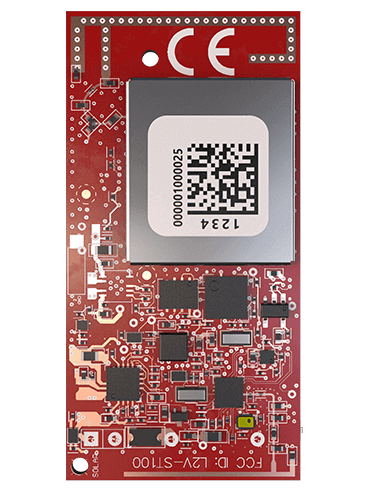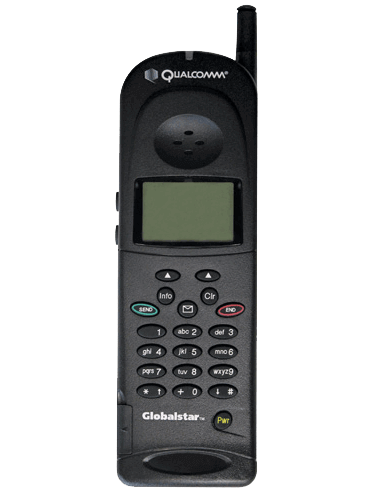Satellite in Department of Defense, Military and Security Applications: Secure, Scalable, and Mission-Ready
In modern defense operations, GPS and satellite connectivity are critical in ensuring situational awareness, asset tracking, and mission execution. Whether in combat zones, logistics hubs, or intelligence operations, securely tracking personnel and equipment in real-time can make the difference between mission success and failure.
However, not all satellite-based tracking solutions are the same. The Department of Defense (DoD), military, and security applications require secure, scalable technologies designed for operation in the most demanding environments. Selecting the right satellite solution is essential from low probability of interception (LPI) and low probability of detection (LPD) requirements to tamper-resistant, low-power tracking devices.
It’s important to give credence to the key considerations for selecting satellite handheld devices and asset trackers that meet the unique challenges of defense applications.
Key Use Cases for Defense and Security Applications
Supporting next-generation defense applications goes beyond traditional networks, as they often fall short in remote, high-risk, or congested areas. This makes satellite-enabled solutions a critical component of DoD and security operations. Whether for logistics, reconnaissance, unmanned systems, or personnel tracking, satellite technology provides uninterrupted global coverage, enhanced security, and seamless integration with existing defense infrastructure. The following use cases highlight how satellite connectivity supports mission-critical applications across the DoD’s vast operational landscape.
1. Tagging, Tracking, and Location (TTL): Secure Real-Time Monitoring
In military logistics, battlefield operations, and force protection, tracking assets and personnel with precision and discretion is critical. Any tracking systems used in these environments must:
- Support LPI/LPD principles, ensuring minimal digital signature to avoid detection
- Operate in real-time with reliable global coverage, even in remote or congested areas
- Use encrypted, tamper-resistant tracking technology to prevent adversarial interference
2. Reconnaissance and Surveillance: Intelligence in the Field
Modern reconnaissance and surveillance operations depend on overt, highly secure tracking solutions to ensure real-time intelligence gathering. Whether deployed for covert asset tracking, monitoring high-value equipment, sensing adversary activities, or training special forces, an effective satellite tracking system must:
- Enable seamless data transmission in remote locations where terrestrial networks are unavailable
- Leverage LEO satellite networks for low-latency, high-reliability connectivity
- Ensure minimal RF signature to prevent detection or jamming
3. Unmanned Systems (UAVs, UGVs, and Robotics): Secure Satellite Connectivity for Autonomy
The DoD, military, and security applications are increasingly integrating unmanned systems such as UAVs (Unmanned Aerial Vehicles), UGVs (Unmanned Ground Vehicles), and autonomous robotic platforms into their operations. These systems require:
- Small form factor optimized for size, weight, power, and cost (SWaP-C)
- Secure satellite communication channels to support beyond-line-of-sight operations
- Tamper-resistant GPS tracking and control mechanisms to prevent adversarial interference
- Resilient satellite connectivity to maintain command and control in GPS-denied environments
Considerations for Satellite Handheld Devices and Asset Trackers in Defense and Security Applications
When selecting satellite-enabled tracking solutions for DoD, military, and security operations, several key factors should be prioritized:
Secure Tracking with No OTA Authentication Requirements
- Reduces exposure to eavesdropping, as devices do not need to announce themselves over the air
- Minimizes RF emissions, lowering the risk of detection and interception
- Ground-based validation ensures security while eliminating unnecessary device transmissions
Tamper-Resistant Tracking for Mission-Critical Assets
- Devices should have physical tamper-detection mechanisms to alert operators if an asset is compromised
- End-to-end encryption ensures data integrity, preventing spoofing or manipulation
- Ruggedized construction protects against harsh environmental conditions and adversarial attempts to disable tracking
Reliable Global Coverage with LEO Satellites
- Global, uninterrupted tracking with low-latency performance
- Seamless handoff between satellite signals, ensuring continuous monitoring
- User Data is processed by multiple satellites simultaneously, offering multipath diversity unlike any other LEO constellation
- Supports high-mobility applications, including airborne, maritime, and land-based operations
Affordability and Platform-Agnostic Integration
- Flexible, cost-effective tracking solutions that can scale across thousands of assets
- Compatibility with tracking and command systems, reducing integration challenges
- Modular deployment options, allowing adaptability in various mission environments
Low-Power, Long-Life Operations for Tactical Applications
- Designed to operate for extended periods with minimal battery drain
- No frequent re-registration or network pings, reducing RF emissions and increasing stealth
- Supports long-duration deployments in remote or congested areas
Satellite Handhelds and Trackers for Defense, Military, and Security: The Globalstar Difference
Integrating secure, scalable satellite tracking and communications solutions is mission-critical as the defense and security operations accelerate their digital transformation efforts. Selecting the right satellite handheld devices and asset trackers enhances operational security, situational awareness, and overall mission effectiveness. Learn more here.
This blog is the second in a series exploring the value of satellite connectivity in mission-critical applications. The next installment will focus on the role of satellite solutions in supporting lone workers and remote communication, providing insight into how these technologies ensure safety and connectivity in the world’s most challenging environments.
 SmartOne Solar
SmartOne Solar SmartOne C
SmartOne C ST100
ST100 STX3
STX3 SPOT X
SPOT X SPOT Gen4
SPOT Gen4 SPOT Trace
SPOT Trace

